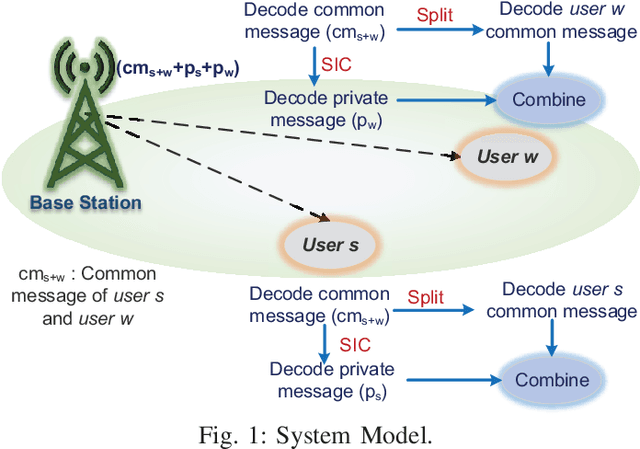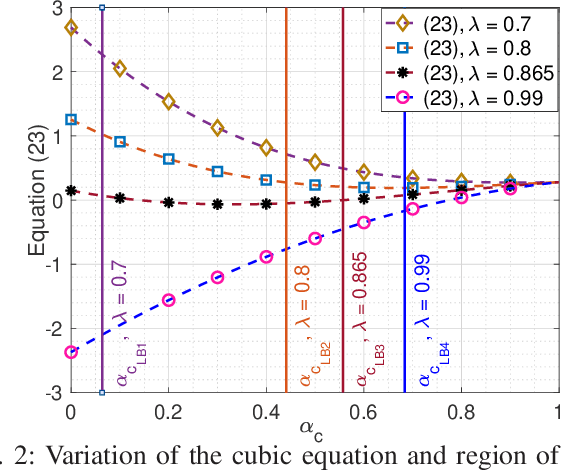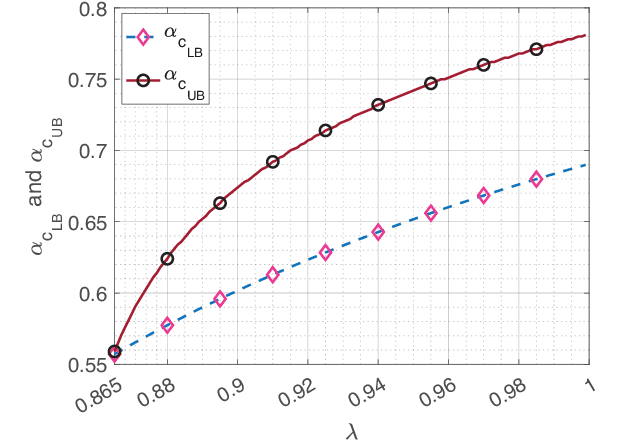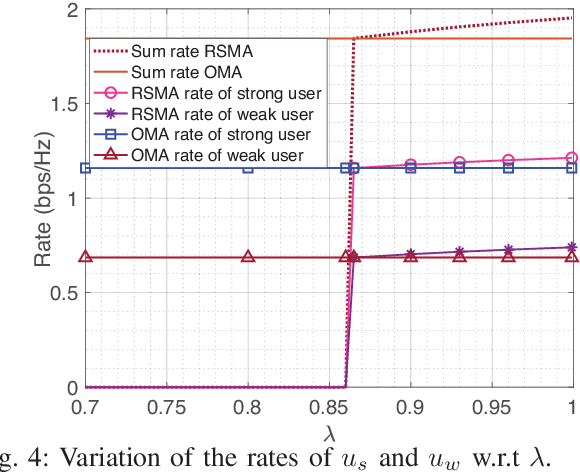Garima Chopra
Bounds on Power and Common Message Fractions for RSMA with Imperfect SIC
Mar 05, 2022



Abstract:Rate-Splitting multiple access (RSMA) has emerged as a key enabler to improve the performance of the beyond fifth-generation (5G) cellular networks. The existing RSMA literature has typically considered the sum-rate of the users to evaluate the performance of RSMA. However, it has been shown in the existing works that maximizing sum-rate can result in asymmetric user performance. It can result in a significant enhancement of one user rate at the cost of the other RSMA user. Further, imperfections can reduce the performance of successive interference cancellation (SIC)-based RSMA. Therefore, in this paper, we consider the imperfection in successive interference cancellation (SIC) and derive suitable bounds on fractions of the power of common and private messages and the fraction of common message intended for each user in an RSMA pair such that their individual RSMA rates are greater than their respective OMA rates. Through simulations, we validate the derived bounds and show that the individual RSMA rates of users can be greater than their respective OMA rates by selecting the parameters within the derived bounds.
Impact of NOMA and CoMP Implementation Order on the Performance of Ultra-Dense Networks
Jan 10, 2022



Abstract:Non-orthogonal multiple access (NOMA) is a promising multiple access technology to improve the throughput and spectral efficiency of the users for 5G and beyond cellular networks. Similarly, coordinated multi-point transmission and reception (CoMP) is an existing technology to improve the coverage of cell-edge users. Hence, NOMA along with CoMP can potentially enhance the throughput and coverage of the users. However, the order of implementation of CoMP and NOMA can have a significant impact on the system performance of Ultra-dense networks (UDNs). Motivated by this, we study the performance of the CoMP and NOMA based UDN by proposing two kinds of user grouping and pairing schemes that differ in the order in which CoMP and NOMA are performed for a group of users. Detailed simulation results are presented comparing the proposed schemes with the state-of-the-art systems with varying user and base station densities. Through numerical results, we show that the proposed schemes can be used to achieve a suitable coverage-throughout trade-off in UDNs.
Enhanced User Grouping and Pairing Schemes for CoMP NOMA based Cellular Networks
Oct 26, 2021



Abstract:Non-orthogonal multiple access (NOMA) has been identified as one of the promising technologies to enhance the spectral efficiency and throughput for the 5G and beyond cellular networks. Alternatively, coordinated multi-point (CoMP) improves the cell edge users coverage. Thus, CoMP and NOMA can be used together to improve the overall coverage and throughput of the cell edge users. However, user grouping and pairing for CoMP-NOMA based cellular networks has not been suitably addressed in the existing literature. Motivated by this, we propose two user grouping and pairing schemes for a CoMP-NOMA based system. Both the schemes are compared in terms of overall throughput and coverage. Numerical results are presented for various densities of users, base stations, and CoMP thresholds. Moreover, the results are compared with the purely OMA-based benchmark system, NOMA only, and CoMP only systems. We show through simulation results that the proposed schemes offer a trade-off between throughput and coverage as compared to a purely NOMA or CoMP based system.
 Add to Chrome
Add to Chrome Add to Firefox
Add to Firefox Add to Edge
Add to Edge